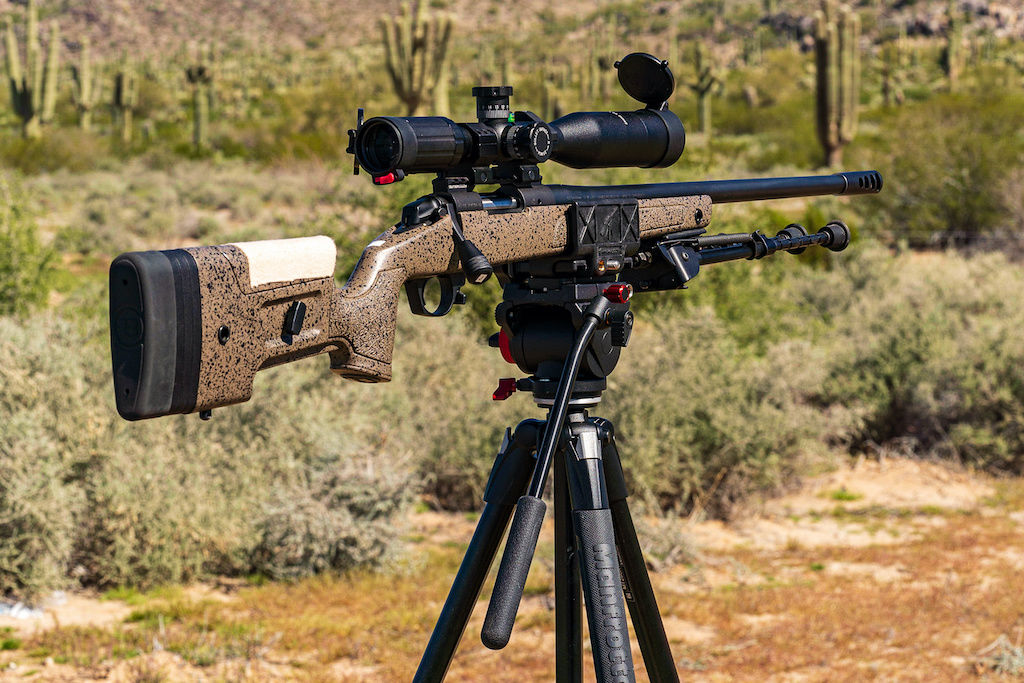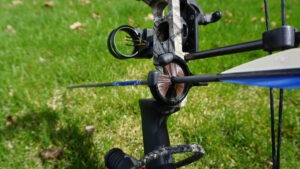If you’re an avid fisherman or designer looking to create custom fishing lures, a 3D printer can revolutionize your fishing experience. With the ability to design and produce intricate lure designs, a 3D printer opens up endless possibilities for customization and innovation. In this article, we will explore the world of 3D printing for fishing lures and help you find the best printer to suit your needs.
Understanding 3D Printing for Fishing Lures
Before diving into the world of 3D printers, it’s essential to have a basic understanding of how 3D printing works. 3D printing is an additive manufacturing process where objects are created by layering materials on top of each other. These layers are built up gradually to form a three-dimensional object based on a digital design.
3D printing technology has revolutionized various industries, including manufacturing, medicine, and even fashion. It offers a range of benefits such as cost-effectiveness, customization, and rapid prototyping.
The Basics of 3D Printing
At the heart of every 3D printer is a nozzle or extruder that heats and melts the printing material, typically plastic, and deposits it layer by layer onto a build plate. The printer follows the instructions of a digital file, known as a 3D model, to determine the object’s shape and structure. As each layer is added, the object slowly takes shape.
One of the key advantages of 3D printing is its ability to create complex geometries that would be challenging or impossible to achieve with traditional manufacturing methods. This opens up a world of possibilities for creating intricate and detailed fishing lures that mimic the appearance and behavior of real bait.
Furthermore, 3D printing allows for the use of a wide range of materials, including biodegradable plastics, metals, and even food-grade materials. This versatility enables anglers to experiment with different materials to find the perfect combination for their fishing lures.
Why Use 3D Printing for Fishing Lures?
So, why should you consider using a 3D printer for fishing lures? The answer lies in the ability to create highly customized and unique designs. With a 3D printer, you can design and produce lures tailored to your specific needs, whether it’s replicating a successful design or experimenting with new shapes and features.
Imagine being able to design a fishing lure that perfectly mimics the appearance and movement of a specific baitfish species found in your local fishing spot. By studying the behavior and characteristics of the target species, you can create a lure that increases your chances of attracting and catching fish.
Additionally, 3D printing allows for rapid prototyping, meaning you can quickly iterate and refine your designs without incurring significant costs. Traditional manufacturing methods often involve expensive molds or tooling, making it difficult and costly to make design changes. With 3D printing, you can easily modify your designs and print new prototypes in a matter of hours.
Moreover, 3D printing opens up opportunities for anglers to collaborate and share their designs with others in the fishing community. Online platforms and communities dedicated to 3D printing and fishing lure design allow enthusiasts to exchange ideas, tips, and even downloadable 3D models. This collaborative environment fosters innovation and encourages anglers to push the boundaries of lure design.
In conclusion, 3D printing offers anglers a unique and exciting way to create custom fishing lures. By harnessing the power of this technology, you can design and produce lures that are tailored to your specific needs and preferences. Whether you’re looking to replicate a successful design or explore new possibilities, 3D printing opens up a world of creativity and innovation in the world of fishing.
Key Features to Consider in a 3D Printer for Fishing Lures
When choosing a 3D printer for fishing lures, several key features deserve your attention. By considering these factors, you can ensure you select a printer that meets your specific requirements.
Creating custom fishing lures with a 3D printer opens up a world of possibilities for anglers. Whether you’re looking to replicate a favorite lure or design your own unique creations, the right printer can make all the difference in achieving exceptional results.
Print Quality and Resolution
The print quality and resolution of a 3D printer play a crucial role in achieving detailed and precise lure designs. Look for printers that offer high-resolution printing capabilities, measured in microns, to ensure that your lures are printed with exceptional accuracy, capturing even the finest details.
Imagine being able to recreate the intricate patterns and textures of real baitfish scales or the lifelike eyes of a prey species. With a high-resolution 3D printer, you can bring these details to life, enhancing the realism and effectiveness of your fishing lures.
Printer Size and Build Volume
The size and build volume of a printer determine the maximum dimensions of the objects it can produce. For fishing lures, it’s essential to consider a printer that can accommodate your preferred lure sizes. Additionally, a larger build volume allows for printing multiple lures simultaneously, increasing productivity and efficiency.
With a printer that offers a generous build volume, you can experiment with different lure sizes and styles. From small finesse lures for targeting finicky fish to larger topwater lures that make a big splash, the ability to print a variety of sizes opens up endless possibilities for your fishing adventures.
Material Compatibility
Not all 3D printers are compatible with every printing material available on the market. Ensure that the printer you choose supports the type of filament or resin you intend to use for your fishing lures. Common materials for fishing lures include PLA, ABS, and resin options that offer durability and flexibility.
By selecting a printer that is compatible with a wide range of materials, you can experiment with different properties to achieve the desired performance in your lures. For example, using a flexible filament can create lures with lifelike action, while a more rigid material may be suitable for creating durable crankbaits that can withstand the teeth of aggressive gamefish.
Furthermore, consider the availability and cost of the materials for your chosen printer. It’s important to choose a printer that allows you to source materials easily and affordably, ensuring that you can continue creating your custom fishing lures without breaking the bank.
Top 3D Printers for Fishing Lures
Now that we have discussed the key features to consider, let’s explore some of the top 3D printers available on the market for creating fishing lures.
Printer 1: [Insert Printer Name]
[Insert a brief description of Printer 1, highlighting its noteworthy features and advantages for printing fishing lures.]
Printer 1 is a cutting-edge 3D printer specifically designed for creating high-quality fishing lures. With its advanced technology and precision engineering, this printer allows anglers to produce custom lures with intricate details and lifelike designs.
One of the standout features of Printer 1 is its ability to print with a wide range of materials suitable for fishing lures. Whether you prefer using durable plastics or flexible materials that mimic the movement of real bait, this printer has you covered.
Additionally, Printer 1 offers a user-friendly interface and intuitive software that allows anglers of all skill levels to design and print their own lures. Its efficient printing process ensures quick turnaround times, allowing you to test and fine-tune your designs without delay.
Printer 2: [Insert Printer Name]
[Insert a brief description of Printer 2, highlighting its noteworthy features and advantages for printing fishing lures.]
Printer 2 is a versatile 3D printer that excels in creating fishing lures with exceptional detail and precision. Its state-of-the-art technology enables anglers to replicate the intricate patterns and textures found in natural bait, giving their lures a realistic appearance that fish find irresistible.
One of the standout features of Printer 2 is its large build volume, allowing you to print multiple lures simultaneously or create larger-sized lures for targeting bigger fish. This printer also offers a variety of printing modes, giving you the flexibility to adjust the printing speed and resolution according to your specific needs.
Moreover, Printer 2 comes equipped with advanced filament management systems, ensuring smooth and consistent filament feeding throughout the printing process. This feature eliminates the risk of filament jams and ensures that your lures are printed flawlessly every time.
Printer 3: [Insert Printer Name]
[Insert a brief description of Printer 3, highlighting its noteworthy features and advantages for printing fishing lures.]
Printer 3 is a top-of-the-line 3D printer renowned for its exceptional print quality and reliability. Designed specifically for fishing enthusiasts, this printer offers a range of features that make it an ideal choice for creating high-performance fishing lures.
One of the standout features of Printer 3 is its advanced dual extrusion system, allowing you to print lures with multiple colors or materials. This feature opens up a world of possibilities for creating eye-catching and highly effective lures that stand out in the water.
Furthermore, Printer 3 boasts a sturdy construction and precise calibration, ensuring consistent and accurate prints every time. Its user-friendly interface and intuitive software make it easy for anglers to design and print their own custom lures, even if they have limited experience with 3D printing.
In conclusion, these top 3D printers offer anglers the opportunity to create their own custom fishing lures with ease and precision. Whether you prioritize lifelike designs, versatility, or advanced features, there is a printer on this list that will meet your specific needs. Invest in one of these printers and take your fishing game to the next level!
Maintenance and Care for Your 3D Printer
Proper maintenance and care are essential for the longevity and optimal performance of your 3D printer. By following a few simple guidelines, you can keep your printer in top shape.
Regular Cleaning and Maintenance
Regularly clean the nozzle and print bed to prevent residue buildup, ensuring consistent print quality. Lubricate any moving parts as recommended by the manufacturer to reduce friction and wear. Regularly calibrate the printer to maintain accuracy and precision.
Troubleshooting Common Issues
Despite proper maintenance, you may encounter occasional issues with your 3D printer. Familiarize yourself with common troubleshooting techniques, such as adjusting print settings, leveling the bed, or replacing worn or damaged parts. By understanding these techniques, you can quickly resolve any issues that may arise.
Maximizing Your 3D Printer’s Potential
Once you have chosen and set up your 3D printer, it’s time to explore the various techniques and resources available to maximize its potential.
Advanced Printing Techniques
Experiment with advanced printing techniques, such as dual extrusion or multi-color printing, to create more complex and visually striking lures. These techniques offer additional design possibilities and allow for greater creativity in your lure designs.
Resources for 3D Printing Enthusiasts
Join online communities, forums, or social media groups dedicated to 3D printing. These platforms provide a wealth of knowledge, tips, and insights from experienced enthusiasts. Additionally, explore online repositories of 3D printable lure designs to find inspiration or ready-to-print models.
With the right 3D printer and a dash of creativity, you can unleash your imagination and create custom fishing lures that are sure to attract attention underwater. Whether you’re a fishing enthusiast or a seasoned lure designer, investing in a quality 3D printer can take your fishing experience to the next level.


